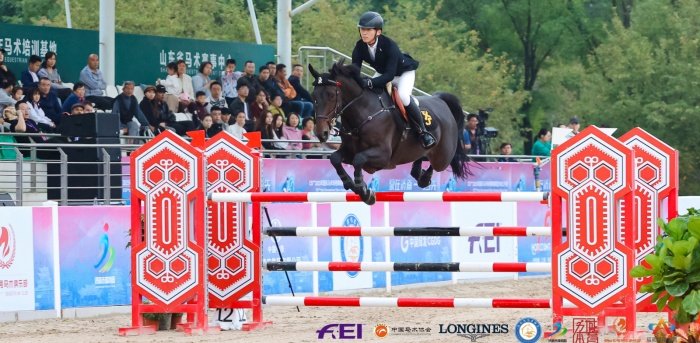The Ultimate Beginner’s Guide to Horse Riding Equipment: What You Actually Need
Starting horse riding is thrilling, but the endless array of equipment can feel overwhelming. New riders often get stuck sorting through shop shelves or online listings, unsure of what’s essential. This guide cuts through the clutter, breaking down must-have gear for both you and your horse—so you can focus on learning and enjoying the ride.

First: A Quick Reference List (Save This!)
Keep this simplified list handy for shopping. We’ll dive into details next, but it’s a great starting point to avoid confusion.
For the Rider
Riding pants (breeches or jodhpurs)
Breathable, non-restrictive shirt
Riding boots (tall or short paddock boots)
Half chaps (paired with paddock boots)
Equestrian-specific helmet
Equestrian safety vest
For the Horse
Saddle, saddle pad, and girth
Stirrup irons and stirrup leathers
Bridle, reins, and bit
Grooming tools
Fly spray
Horse blanket/sheet (weather-dependent)
Horse first aid kit
Essential Equipment for the Rider
All rider gear prioritizes safety and comfort—regular clothing won’t cut it for horse riding’s unique demands. Here’s what you need:
1. Riding Pants
Skip regular jeans—they chafe and limit movement. Opt for two rider-specific styles:
Breeches: Stretchy, thin fabric with no inner seam (prevents chafing). They fit snugly and have grip panels to help you stay balanced and communicate with the horse.
Jodhpurs: More common for kids, but still an option for beginners. They’re slightly looser than breeches but still designed for riding.
2. Shirt
You don’t need a fancy riding shirt (though they exist!), but keep these rules in mind:
Choose breathable fabric (like cotton or moisture-wicking material) to stay cool during long rides.
Pick a style that doesn’t restrict movement—avoid tight sleeves or bulky layers.
Bonus: A shirt with UV protection helps shield you from the sun, since riding often means hours outdoors.
3. Riding Boots
Regular boots are unsafe—riding boots have key features to protect you:
4. Half Chaps
If you wear paddock boots, half chaps are a must. They slide over your calves to:
5. Equestrian Helmet
This is non-negotiable—horse riding carries a high risk of head trauma, even for beginners.
Buy a helmet specifically for horse riding: It has safety technology (like impact absorption) designed for falls from horses.
Get the right fit: A poorly fitting helmet won’t protect you. Use a measuring guide to find your size before buying.
6. Safety Vest
A vest adds an extra layer of protection for your torso:
Shields you from impact if you fall, including from the horse’s hooves.
Some styles are air-filled for extra cushioning.
They’re a bit bulky, but worth it for safety—especially if you’re still learning to balance.
Essential Gear for the Horse
Your horse needs gear for comfort, safety, and clear communication. These items are the basics:
1. Saddle, Saddle Pad, and Girth
The saddle is your biggest investment—but it’s crucial for both you and your horse:
Saddle: Must fit both you and the horse. A bad fit causes discomfort (for the horse) and instability (for you). Learn how to care for it to make it last.
Saddle Pad: Placed under the saddle to:
Cushion the horse’s back (prevents rubbing).
Absorb sweat and reduce heat build-up.
Protect the saddle from dirt and wear.
Girth: A band that wraps around the horse’s belly and attaches to the saddle. It keeps the saddle securely in place.
2. Bridle, Reins, and Bit
This set is how you communicate with your horse:
Bridle: Goes over the horse’s head, with four key parts (crown piece, noseband, cheek pieces, browband). Choose one based on your riding style (e.g., English vs. Western) and if you plan to compete.
Reins: Attach to the bridle—you use them to guide the horse (e.g., pulling left to turn left).
Bit: Fits in the horse’s mouth. It’s a communication tool, so pick one that’s comfortable for your horse (ask a trainer for help if you’re unsure).
3. Stirrup Irons and Leathers
Stirrups are where you place your feet—they’re key for balance:
4. Grooming Tools
Grooming isn’t just about making your horse look nice—it’s part of their health:
Brushes (like a curry comb or dandy brush) keep their coat shiny and remove dirt.
Grooming boosts blood circulation and lets you check for issues (like cuts or bumps) early.
It’s also a great way to bond with your horse!
5. Fly Spray
Flies are more than a nuisance—they carry diseases that can make your horse sick.
Use fly spray to reduce flies on your horse.
Pair it with keeping their area clean (e.g., removing manure) to make the space less attractive to flies.
6. Horse Blanket or Sheet
Do you need one? It depends:
Consider your climate: If it’s cold, wet, or windy, a blanket keeps your horse warm and dry.
Think about your horse: Some horses have thick coats and don’t need a blanket, while others (like older horses) benefit from extra warmth.
Measure your horse first: A blanket that’s too big or small will rub and irritate them.
7. Horse First Aid Kit
You’ll need this to handle minor injuries (and stabilize your horse while waiting for a vet for serious issues).
Buy a pre-made kit, or make your own—just ensure it has basics like bandages, antiseptic, and tweezers.
Keep it in an easy-to-reach place (e.g., near the stable) so you don’t waste time searching during an emergency.

Bonus: What You Can Skip (For Now)
Don’t overspend on “nice-to-haves” when you’re starting out. Items like horse leg boots, fancy riding gloves, or show-specific gear can wait. Focus on the essentials above—you can add more gear later as you gain experience.
Want me to turn this blog into a printable checklist? It will let you tick off items as you shop, making it even easier to stay focused on what you need.
Short FAQs for This Blog
1. Do beginners need professional equestrian shirts?
No. Just pick a breathable, non-restrictive shirt——UV-protective ones are better for outdoors.
2. Must paddock boots pair with half chaps?
Yes. They boost leg-saddle friction and protect calves from rubbing.
3. Do all horses need a blanket?
No. It depends on climate (cold/wet needs it more) and the horse (e.g., older/thin-coated vs. thick-coated). Measure first.
4. Can I use a regular helmet for riding?
No. Equestrian helmets have fall-specific protection—regular ones (e.g., bicycle) don't work.
5. Pre-made or DIY horse first aid kit?
Either works.Pre-madeis easy;DIY fits your needs.Ensure basics like bandages,disinfectant.

